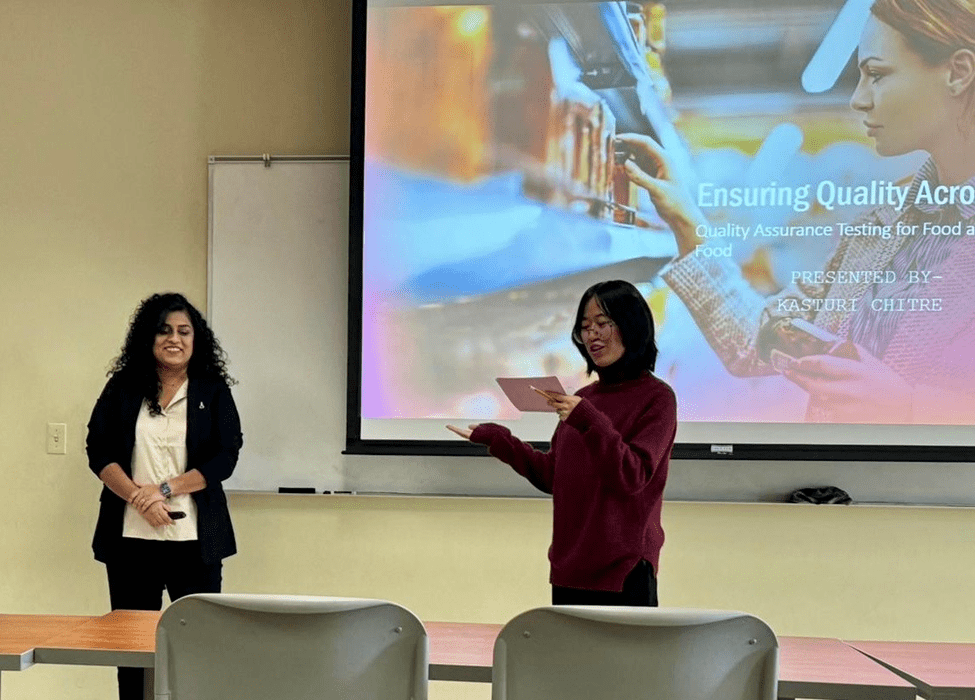Are Global Markets Changing the Way We Think About Product Safety? A Food Scientist’s Perspective

In an era defined by globalization, ensuring the safety of consumer products has become both increasingly complex and critically important. As products cross borders and markets, the standards that govern their safety must evolve to keep pace with international trade and consumer expectations. But how exactly are global markets changing the way we think about product safety?
Global Harmonization of Standards
Efforts to harmonize safety standards across different countries and regions are at the forefront of this evolution. Organizations such as the International Organization for Standardization (ISO) play a crucial role in creating unified safety protocols that can be adopted worldwide. These standards help bridge the gap between varying national regulations, making it easier for companies to ensure their products meet international safety requirements.
Kasturi Chitre, a certified Food Scientist at Consumer Insights referring to her work says “Quality standards are a key part of food quality regulation. For example, the ISO 9001 standard for quality management systems provides a framework that companies can use to ensure consistent quality across all their products, regardless of where they are manufactured or sold. This harmonization not only streamlines the compliance process for businesses but also enhances consumer trust by ensuring a consistent level of safety and quality”
Technological Innovations
Emerging technologies, such as artificial intelligence (AI) and the Internet of Things (IoT), are revolutionizing product safety and compliance. Automated quality checks, real-time monitoring systems, and predictive analytics are just a few of the tools that are making it possible to detect and address potential safety issues more swiftly and effectively than ever before.
“Technological advancements are enabling us to detect and address potential safety issues more swiftly than ever before,” says Kasturi Chitre, who recently spoke at Texas Woman’s University. “AI-driven tools, for example, can analyze large datasets to identify patterns and anomalies that might indicate a safety risk, allowing for proactive measures to be taken.“
Automated systems also reduce the likelihood of human error, ensuring that quality checks are consistent and thorough. Real-time monitoring allows for continuous oversight of production processes, enabling quick responses to any deviations from safety standards.
Consumer Expectations
Kasturi says “In addition to technological advancements, rising consumer awareness and demand for transparency are driving significant changes in industry practices. Today’s consumers are more informed and more concerned about the safety and quality of the products they purchase. This has led to an increased demand for organic, non-GMO, and clearly labeled products.”
Companies are responding to these demands by implementing more rigorous quality assurance processes and providing greater transparency about their products. For example, some companies are using blockchain technology to track the entire supply chain of a product, from raw materials to the finished item, and share this information with consumers.
Kasturi explains that the case in point is the food industry, where consumer feedback has led to improved safety measures. After several high-profile recalls, companies have started investing heavily in better traceability systems and more stringent testing protocols to ensure the safety of their products.
Regulatory Challenges
Navigating the complex landscape of global regulations remains a significant challenge for companies. Different countries have different safety standards, and ensuring compliance across multiple regions can be a daunting task. This regulatory diversity can impact global trade, as companies must adapt their strategies to meet the specific requirements of each market. This is especially where food scientists like Kasturi play an important role in ensuring there is no gap between companies meeting regulation and their business growth.
For multinational corporations, this often means maintaining a comprehensive understanding of regulatory changes in each country where they operate and adjusting their compliance processes accordingly. Failure to comply with local regulations can result in costly recalls, fines, and damage to a company’s reputation.
Future Trends
Looking ahead, several trends are poised to shape the future of product safety. One of the most significant is the push for sustainability. As consumers become more environmentally conscious, there is increasing demand for products that are not only safe for use but also sustainable in their production and disposal.
“Sustainability is becoming a key component of product safety, as consumers increasingly seek products that are safe for both themselves and the environment,” Kasturi adds. One of the recommendations Kasturi recommends to her and her client companies is responding by reducing their use of plastics, ensuring ethical sourcing of materials, and adopting more sustainable manufacturing practices.
Another future trend is the continued integration of advanced technologies into the quality assurance process. From AI-driven quality checks to IoT-enabled monitoring systems, these technologies will further enhance the ability to ensure product safety and compliance.
Conclusion
As global markets continue to evolve, so too must our approaches to ensuring the safety and integrity of consumer products. The harmonization of standards, technological innovations, consumer expectations, and regulatory challenges all play a critical role in this ongoing process. By staying ahead of these trends and continuously improving their quality assurance practices, companies can ensure that their products meet the highest safety standards, no matter where they are sold.
The recent seminar at Texas Woman’s University, featuring industry expert Kasturi Chitre, highlighted the importance of these evolving standards and the innovations driving them. As we look to the future, it is clear that maintaining high safety standards will require a combination of advanced technology, rigorous regulation, and a commitment to sustainability.




